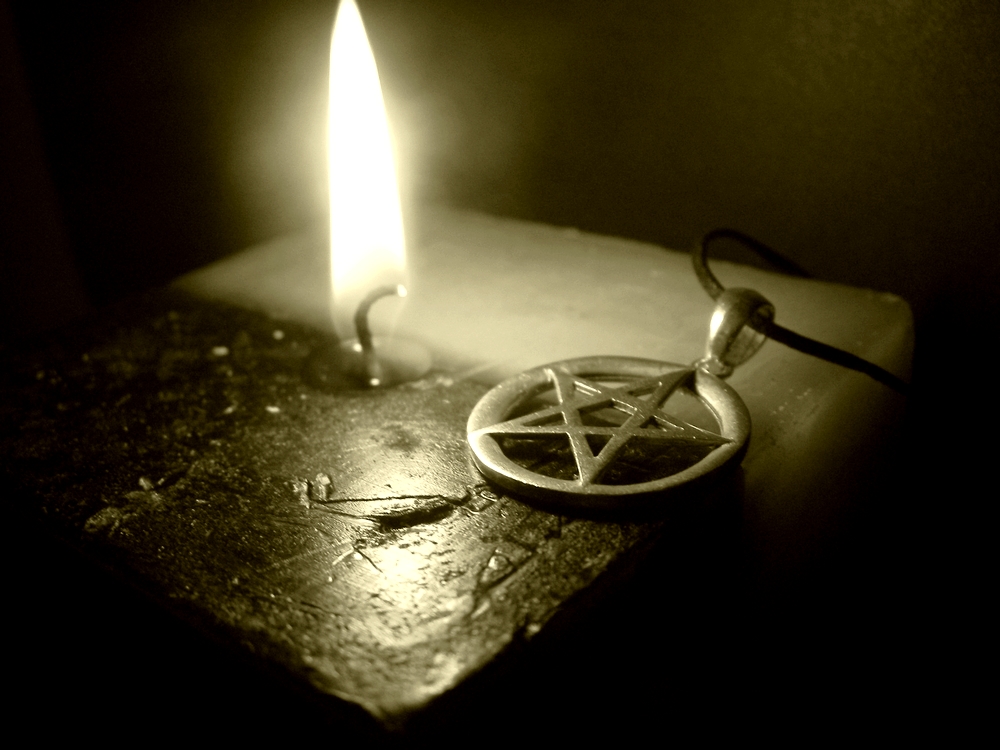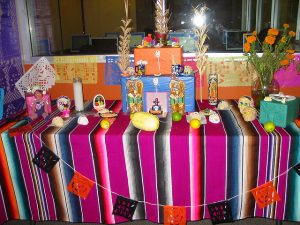First things first, Halloween and Samhain are two separate annual events with different origins and reasons for honoring. I feel it is important to explain the differences between these two events running during the same time of year. I’d also like to explain how many witches and occultists enjoy choosing various parts of both these events to create their own enjoyment during this time of year.
And why not!
With the right knowledge, we CAN respect and enjoy many traditions and cultural events as modern witches!
Halloween
Traditionally celebrated on October 31, Here are some of the primary reasons people celebrate Halloween today:
1. *Tradition and Fun*: For many people, Halloween is a fun and traditional holiday. It offers an opportunity to engage in enjoyable activities such as dressing up in costumes, attending parties, and going trick-or-treating with children. It’s a time to be creative and have a good time.
2. *Cultural and Historical Roots*: Halloween has deep historical and cultural roots, with origins in ancient Celtic festivals like: Samhain. & the Christian holiday of All Saints’ Day (All Hallows’ Day). Halloween’s connection to All Saints’ Day and the Celtic festival of Samhain also includes a focus on remembering and honoring the deceased. Some people use the holiday as a time to pay tribute to loved ones who have passed away.
3. *Community and Socializing*: Halloween often brings communities together. Neighbors decorate their homes, and local events and parades are common. It’s a chance for people to socialize with friends and neighbors.
4. *Costume Expression*: Halloween allows individuals to express themselves through costumes. People can be imaginative and creative in their choice of attire, whether they want to be spooky, funny, or simply pay homage to their favorite characters.
5. *Candy and Treats*: Trick-or-treating is a beloved Halloween tradition where children go door-to-door to collect candy and treats. Many people look forward to indulging in Halloween-themed sweets and snacks.
6. *Spooky and Thrilling Experiences*: Halloween appeals to those who enjoy the thrill of being scared or the excitement of haunted houses and horror-themed events. It’s a time for spooky decorations, horror movies, and ghost stories.
7. *Creative Decorations*: Decorating homes and yards with Halloween-themed decorations is a popular activity. It allows people to showcase their creativity and transform their surroundings into a spooky or festive atmosphere.
8. *Cultural Exchange*: Halloween is celebrated in various countries around the world, and it offers an opportunity for cultural exchange and sharing traditions. It has become a global holiday with unique local variations.
9. *Commercial Appeal*: Halloween has a significant commercial aspect, with businesses selling costumes, decorations, and themed products. The holiday also contributes to the economy through various industries.
Samhain
Also traditionally celebrated on October 31, Samhain also called So-wein, Sow-in, Sabbath that marks the third and last harvest.
This day marks the end of the summer, the death of the Solar God and the return to the underworld of the Goddess who regenerates in the hollow of the earth matrix for her winter gestation. As the legend of Demeter and Persephone teaches, the Goddess is confined to the underworld for the winter, symbolizing the infertility and gestation of the Earth until spring and its renewal.
The theme of this Sabbath is therefore to honor death, the cycle it engenders and its eternal mystery. Pagans greet and respect all those who have disappeared from the world and are living in the immaterial world. The old tradition stated that you must have everything before Samhain or be at the risk of losing your harvest after this time. Samhain is a time to reflect on the past year, to accept death as a phenomenon of life that escapes our control. This also brings a form of hope because the cycle continues.
Samhain, was once a sacrificial time. It was at this time that cattle were slaughtered to obtain food for the winter season. The God, who was identified with animals, ensured the continuity of existence. Today, sacrificial rites are no longer practiced, of course, but the tradition of getting ready for the winter continues.
Some Traditions Of Samhain
Samhain’s recipes include; apple cakes, roasted chestnuts and chestnuts, mashed squash, potatoes, onion confit, hams, dried fruits, nuts, almonds, honey etc…Honor the ancestors, during the meal; place a plate more at the table. Serve a generous portion of each prepared dish and then invite the spirits to its table. While eating, think of those you loved and who are gone. Talk about them during the meal; at the end of the meal, thank the spirits for their presence and take the full plate and a glass of wine to the front door. Leave them there all night.
Another way to honor the ancestors is that each one presents himself by mentioning his lineage during the ritual. For example: “I am a girl, daughter of …, grandchild of …etc. In mentioning the ancestors, you should recall great great grand lineage. Men will present their male lineage in the same way. Finish this tradition with a song in honor of the ancestors. For that, use your imagination to compose it.
Make the wheel of the year; take a plate or a shallow dish where you will paint a large circle. Make a point in the middle of this circle and draw eight lines radiating from this point to the circumference of the circle. Obtain the symbol of the wheel of time, symbol of the Sabbaths, symbol of eternity.
Turn off the fire of the year. Samhain is the New Year for Pagans, witches and wizards. To symbolize the end of the year, we extinguish the fire of the past year. This is done by lighting two symbolic lights, one for the year that ends, and one for the year that will begin. The New Year’s fire is blessed during the ritual. That of the past year is extinguished and then relighted from a fire that will be the fire of New Year.
In the night of Samhain, it is customary to place a candle on the window sill to guide the souls of the deceased to Summerland and bury apples in the packed earth that will be used to feed them during their journey. In Wicca, November 1st is referred to as a new year and irrespective of what might have happened in the past, the wheel of life continues.
All Saints’ Day
All Saints’ Day, also known as All Hallows’ Day, is a Christian holiday that is observed on November 1st in Western Christianity. It is a day dedicated to honoring all the saints, known and unknown, who have attained heaven. The day is an opportunity for Christians to remember and celebrate the lives and contributions of these saints, who are considered role models of faith and virtue.
Key points about All Saints’ Day include:
1. *Origin*: All Saints’ Day has its roots in the early Christian church. It was initially celebrated to honor martyrs who had died for their faith. Over time, it evolved to include all the saints.
2. *Connection to Halloween*: All Saints’ Day is preceded by Halloween, which is short for “All Hallows’ Eve.” Halloween is observed on October 31st and is followed by All Saints’ Day on November 1st. In some cultures, the celebration of Halloween includes remembering the deceased, which is in line with the theme of All Saints’ Day.
3. *Liturgical Observance*: All Saints’ Day is a significant liturgical observance in many Christian denominations, including the Roman Catholic Church, Anglican Communion, and others. It is a day when special church services are held to honor the saints, and the names of the saints may be read during these services.
4. *Solemnity*: All Saints’ Day is considered a solemnity in the Catholic Church, which is one of the highest ranks of feast days. It is a day of reflection, prayer, and thanksgiving for the lives of the saints and their intercession on behalf of believers.
5. *Cultural Practices*: In some countries, people visit cemeteries and graveyards on All Saints’ Day to pay respects to their deceased loved ones. They may also light candles or place flowers on graves as a sign of remembrance.
6. *Eastern Christianity*: In the Eastern Orthodox Church, All Saints’ Day is observed on the first Sunday after Pentecost. It is known as the Sunday of All Saints. The focus is similar, honoring the memory of all saints. All Saints’ Day is a time for Christians to reflect on the spiritual journey and contributions of those who have lived exemplary lives of faith. It serves as a reminder of the communion of saints, the interconnectedness of believers throughout history, and the belief in the ultimate goal of reaching heaven through faith in Christ.
“Halloween” for Witches
It’s important to note that witchcraft is diverse, and practices can vary widely based on personal beliefs and the specific tradition followed by each witch. Some witches may not celebrate Halloween or Samhain in a magical or religious way at all, and may simply enjoy the holiday in a secular fashion.
Here are some common activities that witches may engage in on Halloween:
1. *Honoring Ancestors*: Samhain is often considered a time when the veil between the physical and spiritual worlds is thin. Witches may use this opportunity to honor and communicate with their ancestors, leaving offerings, lighting candles, or holding rituals to connect with departed loved ones.
2. *Divination and Scrying*: Many witches use Samhain as a time for divination and scrying, seeking insights into the future or gaining clarity on important life decisions. Common divination tools include tarot cards, runes, and crystal balls.
3. *Bonfires and Fire Magic*: Lighting bonfires or candles is a common practice on Halloween. Fire is seen as a purifying and protective element, and it’s used in various rituals and spells for cleansing and setting intentions.
4. *Costumes and Disguises*: The tradition of wearing costumes on Halloween has its roots in ancient Celtic practices. Some witches may don special attire or masks during Samhain rituals to symbolize transformation and the crossing of boundaries between worlds.
5. *Offerings to Spirits*: Witches may leave offerings of food, drink, or other items for spirits or deities they work with. This is done to establish connections, seek protection, or show gratitude.
6. *Harvest Celebrations*: Samhain is also a time to celebrate the final harvest of the year. Witches may incorporate seasonal foods and herbs into their rituals and feasts, giving thanks for the bounty of the earth.
7. *Shadow Work*: Halloween can be a time for self-reflection and shadow work, where witches explore their own inner darkness and confront personal fears and traumas in order to grow spiritually.
8. *Protection Spells*: As the belief goes that the veil between worlds is thin during Samhain, some witches may perform protection spells or rituals to safeguard themselves and their homes from negative energies or unwanted spirits.
9. *Community Gatherings*: Many witches participate in group rituals or gatherings with fellow practitioners to celebrate Samhain. These events often involve the sharing of stories, traditions, and practices.
A very particular highlight of this celebration is the Lifting of the veil. Most Halloween celebrants don’t probably know of this. The veil is knowledge of the “other world”. During this point, the human being can relate with spirits or other spiritual beings, such as demons and whatnot, without harm. Ancient practitioners of Halloween believed in the afterlife as a matter of course; they would have found incomprehensible the idea that cultivating a relationship with the dead was wrong or evil.
At this point, you’re probably wondering; what about tasty candies, trick-or-treating, wild college orgy, pumpkin lamps, haunted houses and scary costume parties?
Another very immaculate feature is the Jack-o-lantern. This Gnostic story of a lost spirit is represented in Jack who roams about the dark countryside of Hades on All Hallows Eve (October 31) with his illuminated candle, in search of his soul that is located somewhere between heaven and hell. His pumpkin represents the darkness of his body, that inside holds the light of his spirit within. Forever, the Jack- O-Lantern wanders as a lost spirit in Hades that could not find a place to rest. In other words, Jack could never find his soul that was located within him the whole time.
Satanic/Occult Witches
Here is a scene of the true Halloween celebration, portrayed in this 21st century. They prepare the Sanctum for the ritual which objectifies Satan and the Hosts of Hell, with respectful sentiment and praise her devotion to their craft.
On the night to come, a woman (an initiate) will freely give of her spirit and body, creating intoxicating evil power for the entire coven. She will be exalted as the wicked and blasphemous mother, extending her desire to culminate in profane lust and satisfaction. It is her energy which opens the door and it is the invitation to devour the light, replacing the truth with eternal darkness. She is the fountain of Satanic Blessings and they partake deeply of her impious energy. Sinister chant fills the chasm with energy and floods their Sanctum with every dark desire.
This to them, is the night of bold indulgence, not hypocritical restraint. They believed that deeply seated natural instincts are released and the thoughts of the mind are made manifest to roam the Satanic Sanctum. Candles glowing, illuminating the pentagram and the stone of wisdom with warmth and enticement. Flowing robes of satin and silver chains under hoods of black in shimmering focus cutting through the night, breath forms a vapor mingling as black candles are spent.
The climax of the celebration was in the belief that Lucifer awaits quietly to pour the blessings of Hell upon those gathered.
Day of the Dead
Día de los Muertos, or “Day of the Dead” as it translates in English, began in central and southern Mexico thousands of years ago. At that time, mourning the dead was seen as disrespectful. Instead of grieving, it was more important to keep the memory of those who have passed alive. Those who celebrate the holiday believe that at midnight on October 31, the souls of deceased children come down from heaven and reunite with their families on November 1. In the Roman Catholic tradition, November 1st is also All Saints Day. They believe the souls of deceased adults come to visit on November 2, which is also known as All Souls Day in the Catholic religion.
Final Thoughts
Halloween hasn’t always been a holiday of fun or enjoyment. It is filled with magic, mysteries, and superstition. But today many of these practices are considered obsolete as it now centered on fun, charity, and entertainment. So while you’re getting ready for that next celebration, be it Christmas or whatever, I want you to ask yourself “What does it all signify”.
You may also enjoy these posts:
THE 7 CANDLE SPELL ON HALLOWEEN
The Significance Of Beltane Night Celebration






